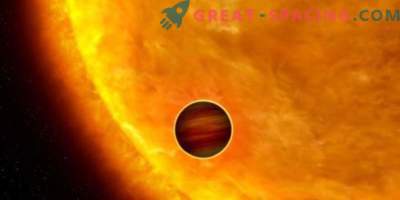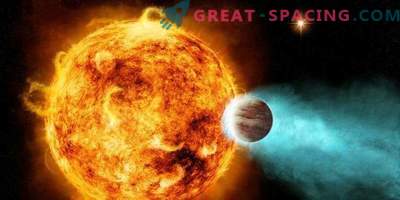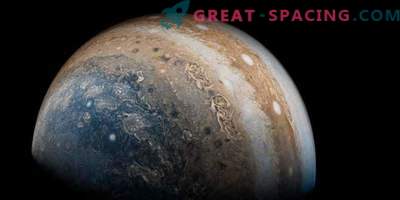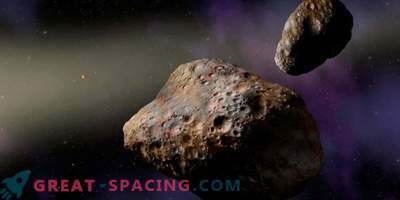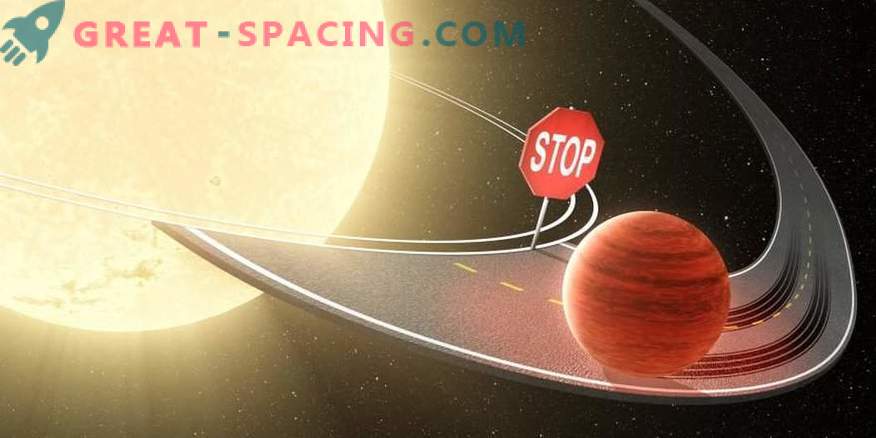
Planets are migrating! They did not appear in the present locations, but were fixed in orbits after a series of collisions and relocations. In a new study, scientists show where the largest planet in the solar system came from.
Differ from neighbors
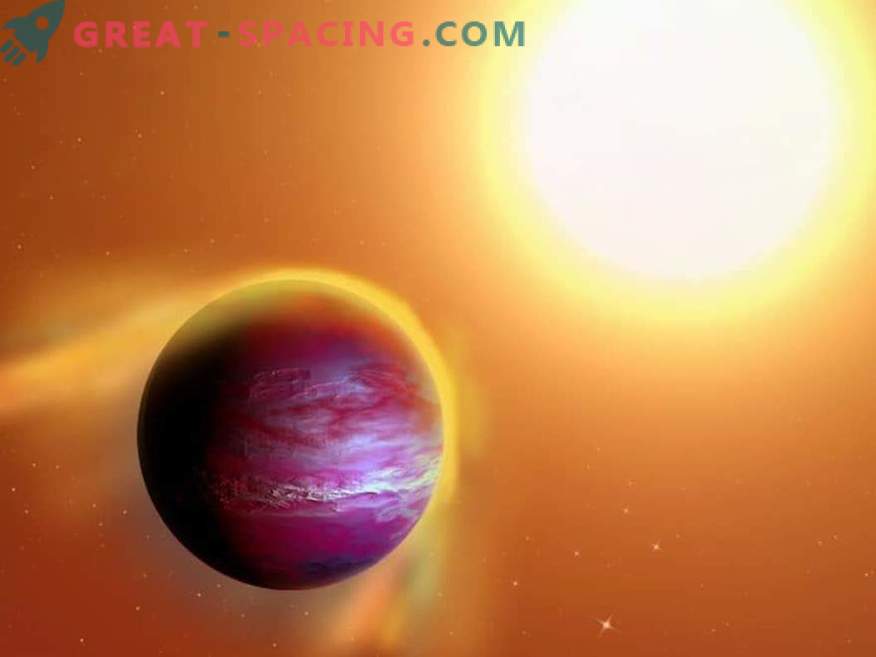
An artistic vision of a new giant planet, PTFO8-8695 b, which will rotate around a star in the constellation Orion at 11 o'clock. It seems that the gravity from the new star delays the outer layers of the planet, resembling Jupiter.
Take a close look at other people's star systems and notice that the number and location of exoplanets is different from our picture. You can find earth-like worlds, lava or frozen planets. However, most of the questions are the category of “hot Jupiter”.
These alien gas giants resemble or exceed Jupiter in size. However, the main difference lies in their distance from the star. If Jupiter is located at a distance of 5 a. e. From the Sun, then its gas counterparts are only 0.05 meters away. e. That is, these giants are heated at a distance of Mercury-Sun! Why is our Jupiter located so far?
Planetary Migration

This figure shows three possible scenarios for the evolution of asteroid belts. On the top panel, a planet with the size of Jupiter migrates through the asteroid belt, scattering material and preventing the formation of life on the planets. The second scenario shows our model of the solar system: a planet the size of Jupiter, which moves a little inward, but is located outside the asteroid belt. In the third illustration, the large world is deprived of the migration process, which creates a massive belt of asteroids, whose material will attack the planets and possibly prevent the development of life. One theory points to the migration of planets. Hot Jupiters are believed to form outside the snow line (outer star system), and then approach the home star. The reason may be the natural orbital migration of type II (occurs during the phase of a stellar nebula, when gas is still present) or the whole thing is in a sudden collision with other massive planets.
But Jupiter is still far away. Why didn't the planet migrate closer to the Sun and where did it form?
Help from asteroids

The distribution of asteroids in the solar system
In a recent study, scientists have shown that initially the largest gas giant in the solar system was located 4 times farther from the sun than in its current position. The findings suggest that Jupiter began to approach the star along a spiral path when it resembled our Earth in size (4.5 billion years ago). The shift to today's orbit began in 2-3 million years after the formation of the basis of Jupiter, and the displacement process itself had to be spent about 700,000 years.
What is evidence? The clue was a computer model based on the location of two families of Trojans (asteroid group). Both groups consist of thousands of objects and rotate at the same distance from the Sun as Jupiter. But the fact that in one group there were half as many asteroids than in the second was surprising. To find the cause of the asymmetry, the researchers conducted a simulation. As a result, it was possible to derive the most likely scenario for the development of events in the past. Today's picture with Trojan asteroids around Jupiter can be observed only if the planet was originally located at a distance of 20 a. e. from the star of the solar system.
Postscript
Calculations show that asteroid groups began to be attracted to the planet at a time when Jupiter did not have a large-scale atmospheric layer. That is, all these cosmic rocks in composition can resemble the core of a gas giant, and therefore deserve the attention of scientists.
